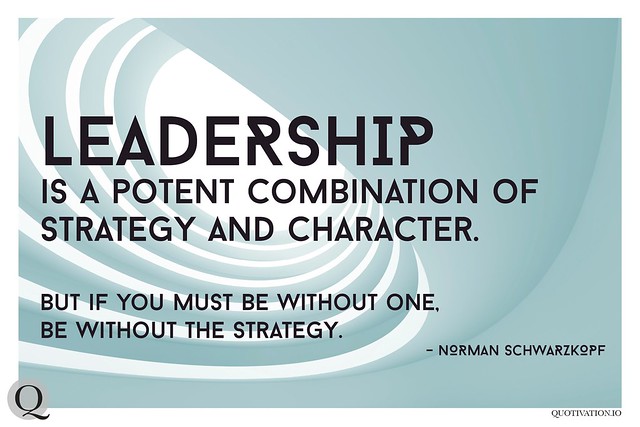Audit Leadership & Commitment

An Introduction of the High-Level Structure for management system standards, there is now an emphasis on the demonstration of leadership and commitment.
Demonstrating of Leadership and Commitment
ISO 9001 and 14001 Standards have always had a level of Top Management commitment requirements, however with the introduction of the High Level Structure (HLS) for management system standards and the recent releases of ISO 9001:2015 and ISO 14001:2015 there is now more emphasis on the demonstration of leadership and commitment.
This article is going to look at how auditors may audit against these requirements of leadership and commitment and what evidence they might review Clause 5.1 Leadership and commitment is difficult to ‘audit’ in isolation from other clauses. An auditor needs to review these from a systems and process perspective, rather than a clause-by-clause approach.
So, what are we as auditors looking for when conducting an audit and assessing the level of leadership and commitment of Top management, whether it be for Quality or Environment? Or even any other of the modern management systems such as, ISO 27001 Information security and ISO 55001 Asset management. The ISO High Level Structure includes each of the following requirements in the overarching clause 5.1 Leadership and commitment:
1. Ensuring that the policy and objectives are established and are compatible with the strategic direction of the organization
What are we looking for?
A documented current and relevant policy as well as measurable objectives that are consistent with the policy. Now, it’s quite easy for an organization to print out a policy and objectives with no involvement of Top Management isn’t it? So simply just seeing that they are there may not be enough. Interviewing and questioning both top management and staff will provide some background to the process of the policy and objectives development and the involvement and familiarity of top management in the process.
Top management should also be able to explain how the policy and how the objectives for the business align and are compatible with its strategic direction.
2. Ensuring the integration of the management system requirements into the organizations business processes
What are we looking for?
As mentioned previously, an audit should be conducted following the processes of the organization, not clause-by-clause. By following these processes:
- how do you know what your customers want?
- How do you ensure you can deliver as per their requirements?
- What environmental impacts have been identified?
- And so on …..
By following the processes, you will be able to determine if the quality or environmental management system is one that is integrated within the business (it’s just the way they do business) or whether it is a separate system that may be a hindrance to the day-to-day functions of the business.
3. Ensuring that the resources needed for the management system are available
What are we looking for?
Look around. Are there sufficient resources to ensure the implementation, maintenance and improvement of the management system? Resources could be competent people, the right tools and equipment, the correct software and associated hardware, suitable workstations, appropriate vehicles, generally the people have what they need to do their work.. Are the people able to conduct their work to meet customer requirements and minimise environmental impact?
4. Communicating the importance of effective management and of conforming to the management system requirements
What are we looking for?
Evidence might be through any or a few of the following:
- Interviews with staff to determine their understanding of the management system and how the way they work conforms or impacts upon the effectiveness of the business
- Noticeboards – what’s on the board, is it current? Are people aware?
- Meeting minutes – who attends, how frequent are they, do they produce action items and are these actually actioned?
- Induction records – is the management system explained?
- Training records – what training do people get in using and understanding the management system
This requirement is about determining how well the management system has been communicated to all staff and contractors and how aware they are of their contribution and impact to the effectiveness of the system.
5. Ensuring that the management system achieves its intended outcome(s)
What are we looking for?
There should be a good alignment here with the documented objectives. However as well as the outcomes being the documented objectives, they may also be included in product/service requirements, specifications, contracts or service level agreements, or even legislation. Auditors would then be looking for how are these monitored, measured, analysed and reported on. This may be through any or a few of the following:
- Audit results
- Nonconformances and corrective actions
- Management review
- Inspection and test results and reports
- Compliance reports
- Product and process monitoring
6. Directing and supporting persons to contribute to the effectiveness of the management system; and
7. Supporting other relevant management roles to demonstrate their leadership as it applies
What are we looking for?
These two requirements work well together and auditiors may be looking for similar evidence to demonstrate the achievement of these. This leadership requirement can be demonstrated throughout various elements of the organizations system, processes and staff. Auditors might observe or review the following areas to help determine how this is being met:
- Management and staff at all levels being aware of their responsibilities and contribution to the delivery of products or services to the customer
- Observe the process of order receipt through to delivery or after-sales
- Review reporting of management for the achievement of product or service targets
- Meeting minutes of operational teams to determine targets
- Position descriptions that reflect the actual job and that are understood by the people in those positions.
- Performance reviews including responsibilities and performance measures based on the effectiveness of their contribution to the management system
8. Promoting continual improvement
What are we looking for?
Demonstrating continual improvement is through the implementation of all of the elements of a management system, is the business better now than it was in the past?
And if the business is better – how is it better? What measures are in place that show the business is producing a better result that it was previously.
How does management share this news? How do they congratulate staff, and make the workers appreciate that this is good for all?




-2.png?width=352&name=MTK%20%20Resume%20Blog%20(4)-2.png)

